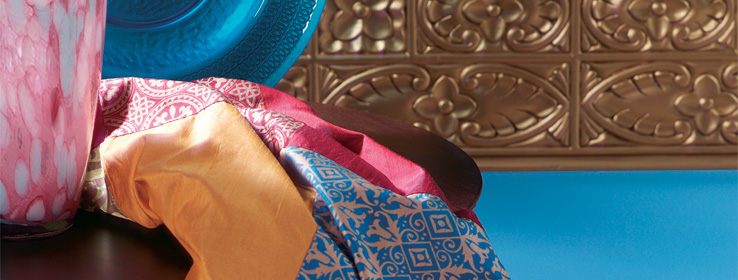Do color-matching frustrations have you seeing red? Don’t get mad, get a color model instead.
If you’ve ever struggled to reproduce a color from one project to another, or to “translate” a particular color from a swatch of fabric to a can of paint, then you’ve experienced firsthand the challenges associated with something called “color space.”
Color space refers to the particular universe of colors made possible from combining three or four basic colors, or from adjusting hue, saturation and brightness. For a design professional, the challenge lies in the multitude of color spaces available, each based on a different combination of colors and values.
RGB (red green blue) is an example of a color space. So is CMYK (cyan magenta yellow black). Sometimes getting the sofa to match the paint requires the ability to move back and forth between color spaces. To do that, you need a basic grasp of color models: the different mathematical formulas (based on component colors) for defining color spaces. Let’s take a look at three of the most common color models, as well as their typical applications.
RGB. Common to color models used for computer monitors and television screens, the RGB color model depends on the human eye to “mix” dots (or pixels) of red, green and blue. For example, 85 107 47 in the RGB color model equals a dark olive green.
Here’s where RGB gets tricky: The pixels in various computer monitors display red, green and blue differently, so what you see on one screen rarely matches what you see on another. Also, the RGB color model itself does not define the specific red, green or blue used, so a given RGB color can’t be exact unless the spectral makeup of the three primaries are defined. When they are, the RGB color model then produces an absolute color space, such as Adobe RGB.
CMYK. As with the RGB color model, CMYK color is based on dots of just a few colors — in this case, cyan, magenta, yellow and black. (The K in CMYK stands for black.) CMYK color is common to color printing, which is why that process is often referred to as “four-color printing.”
One of the most challenging aspects of professional printing is converting RGB color from a computer into matching CMYK color for the press. Especially problematic: In some areas of the visible spectrum, the RGB color space lies outside the CMYK color space. In other areas of the spectrum, the reverse is true.
PMS. One way to ensure color matching across platforms (such as computer monitors, printing presses, fabrics and plastics) is to use an exact color model, such as the proprietary Pantone Matching System (PMS). Pantone produces several guides every year containing thousands of solid PMS colors on coated and uncoated chips with corresponding printing ink formulas for each color. The guide refers to each PMS color by its allocated number. Galapagos Green, for instance, is PMS 18-5725.







